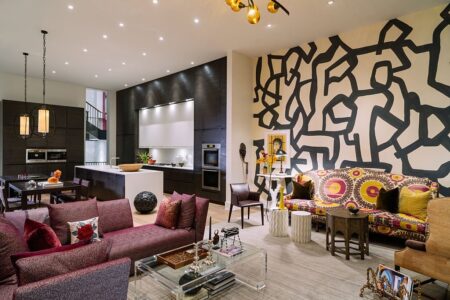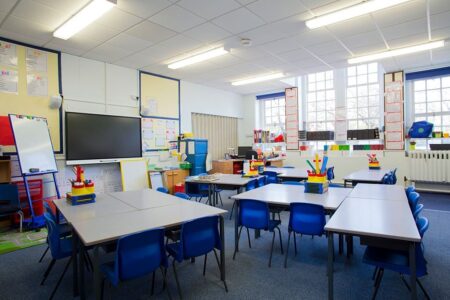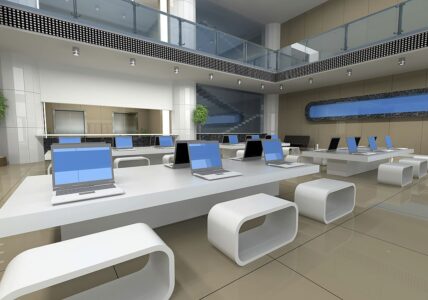Creating the best interior decoration involves a combination of creativity, planning, and attention to detail. Here’s a comprehensive guide to help you create an exceptional interior decoration for your space:
- Define Your Vision:
Begin by envisioning the atmosphere and aesthetics you want to achieve in your space. Consider the purpose of the room—whether it’s a living area, bedroom, kitchen, or office—and how you want to feel when you’re in that space. Think about the emotions you want to evoke, whether it’s a sense of calm, energy, coziness, or sophistication. Take inspiration from various sources, such as interior design magazines, online platforms like Pinterest and Instagram, and even your own experiences and travel memories. - Set a Budget:
Establishing a clear budget is essential for your interior decoration project. Determine how much you’re willing to spend overall and break it down into categories like furniture, decor, materials, and any professional assistance you might need. This step will help you prioritize where to allocate your funds and prevent overspending. - Plan the Layout:
A well-thought-out layout contributes to the functionality and aesthetics of a space. Start by measuring the dimensions of the room and sketching a basic floor plan. Consider the flow of movement within the space, how natural light enters the room, and the placement of doors and windows. Experiment with different furniture arrangements to find the one that maximizes space usage and enhances the room’s visual appeal. - Choose a Color Palette:
Colors play a significant role in setting the tone of a room. Select a color palette that aligns with your vision and the mood you want to create. Begin with a dominant color that serves as the base, followed by complementary colors and accent shades. Consider the psychology of colors—for example, cool tones like blues and greens evoke a sense of tranquility, while warm tones like reds and yellows create a cozy ambiance. - Select Furniture:
The furniture you choose should reflect your style while also serving its intended purpose. Consider both aesthetics and functionality. Choose pieces that are appropriately scaled for the room and ensure there’s enough seating and surface area to accommodate your needs. Mix different types of furniture to add visual interest—a combination of sofas, chairs, tables, and storage units can create a dynamic and balanced arrangement. - Consider Lighting:
Lighting has a transformative effect on a room’s atmosphere. Incorporate a variety of lighting sources to create layers of illumination. Start with ambient lighting, which provides overall illumination. Add task lighting for specific activities like reading or cooking, and accent lighting to highlight architectural features or artwork. Explore different types of light fixtures, such as pendant lights, chandeliers, floor lamps, and wall sconces. - Add Texture and Patterns:
Texture and patterns contribute depth and visual interest to your interior design. Incorporate a mix of textures, such as soft fabrics, rough wood, smooth metal, and textured ceramics. Introduce patterns through textiles, upholstery, rugs, and wallpaper. Experiment with a variety of patterns, from subtle geometric shapes to bold florals, to add personality and dimension to the space. - Choose Decor and Accessories:
Decor and accessories are the finishing touches that bring your design together. Select items that resonate with your style and contribute to the overall theme of the room. Consider incorporating personal items, such as family heirlooms, travel souvenirs, or artwork created by loved ones. These elements add character and make the space uniquely yours. - Incorporate Natural Elements:
Bringing nature indoors enhances the ambiance of your space. Integrate natural elements like indoor plants, botanical prints, wooden furniture, and stone accents. Biophilic design principles suggest that connecting with nature in your environment can have positive effects on well-being and stress reduction. - Create Focal Points:
Focal points draw attention and create a sense of visual hierarchy within a room. Identify key architectural features or design elements that you want to highlight. Focal points could be a fireplace, a piece of artwork, an accent wall, or a statement piece of furniture. Positioning furniture and decor around these focal points can enhance the overall impact of the room. - Pay Attention to Details:
Small details contribute to the overall cohesiveness of your design. Consider hardware, trim, molding, and finishes that complement your design style. Hardware such as doorknobs, cabinet pulls, and faucets should be chosen with care to ensure they harmonize with the overall aesthetic. - Maintain Balance:
Balance is key to achieving a visually appealing design. Balance can be symmetrical, where elements on either side of a central axis are identical or nearly identical. Alternatively, balance can be asymmetrical, where visual weight is distributed differently but still achieves equilibrium. Striking the right balance ensures that no single element overwhelms the overall design. - Personalize the Space:
Infuse your personality into the space by incorporating personal touches. Display family photos, artwork created by loved ones, or items that hold sentimental value. These personal elements create a sense of authenticity and warmth in the space. - Test and Adjust:
Once you’ve implemented your design choices, step back and assess how they interact with the space. Make adjustments as needed—this could involve rearranging furniture, experimenting with different decor arrangements, or trying out alternative color shades. Be open to refining your design to achieve the best results. - Consider Sustainability:
If environmental consciousness aligns with your values, make sustainable design choices. Opt for eco-friendly materials, energy-efficient appliances, and low-impact furnishings. Sustainable interior design not only benefits the environment but also contributes to a healthier living environment for you and your family. - Seek Professional Help:
If you’re uncertain about certain design aspects or would like expert guidance, consider consulting with an interior designer or decorator. Their expertise can provide insights, creative solutions, and a professional touch to your project. - Reflect and Revise:
After completing your interior decoration, take time to live in the space and evaluate its functionality and aesthetics over time. You might discover areas that require further adjustment or find opportunities to enhance the design based on your experiences.
Creating the best interior decoration is a dynamic and creative process that involves careful planning, experimentation, and a keen eye for detail. By following these steps and infusing your personal style and preferences, you can transform your space into a harmonious and inviting environment that truly reflects your personality and enhances your quality of life.







